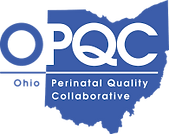



Technology Overview
DEPENDENCE MODULATORS AS A NEW THERAPEUTIC CLASS
We have now shown that ATX-1209 (LD-6BN) reaches central opioid receptor sites by slow penetration and long retention in the brain, enabling a possible gradually reversal of upregulated basal MOR activity. ATX-1209 appears to act as a dependence modulator rather than a typical opioid antagonist, accounting for its prevention of opioid dependence during agonist treatment, and possibly other aspects of opioid addiction.

World Class Collaborators
Neonatal centers in Ohio have worked collaboratively over the last 6 years to improve the care of infants with neonatal abstinence syndrome (NAS). In a series of projects, Dr. Michele Walsh and her collaborators identified improvements in pharmacologic treatment protocols that reduced the duration of opioid exposure in six Children’s hospitals. They next moved to the statewide quality collaborative, the Ohio Perinatal Quality Collaborative, and recruited all level 2 and 3 NICUS in the state to use reliability science methods to improve the care of all newborns and further reduce opioid exposure and duration of hospitalization [27]. Through these prior works, they have accumulated a database that contains over 9,000 opioid exposed neonates. Thus, we are uniquely suited to conduct rapid research that can inform future randomized clinical trials and further improve the care of infants with NAS using 6BN.
